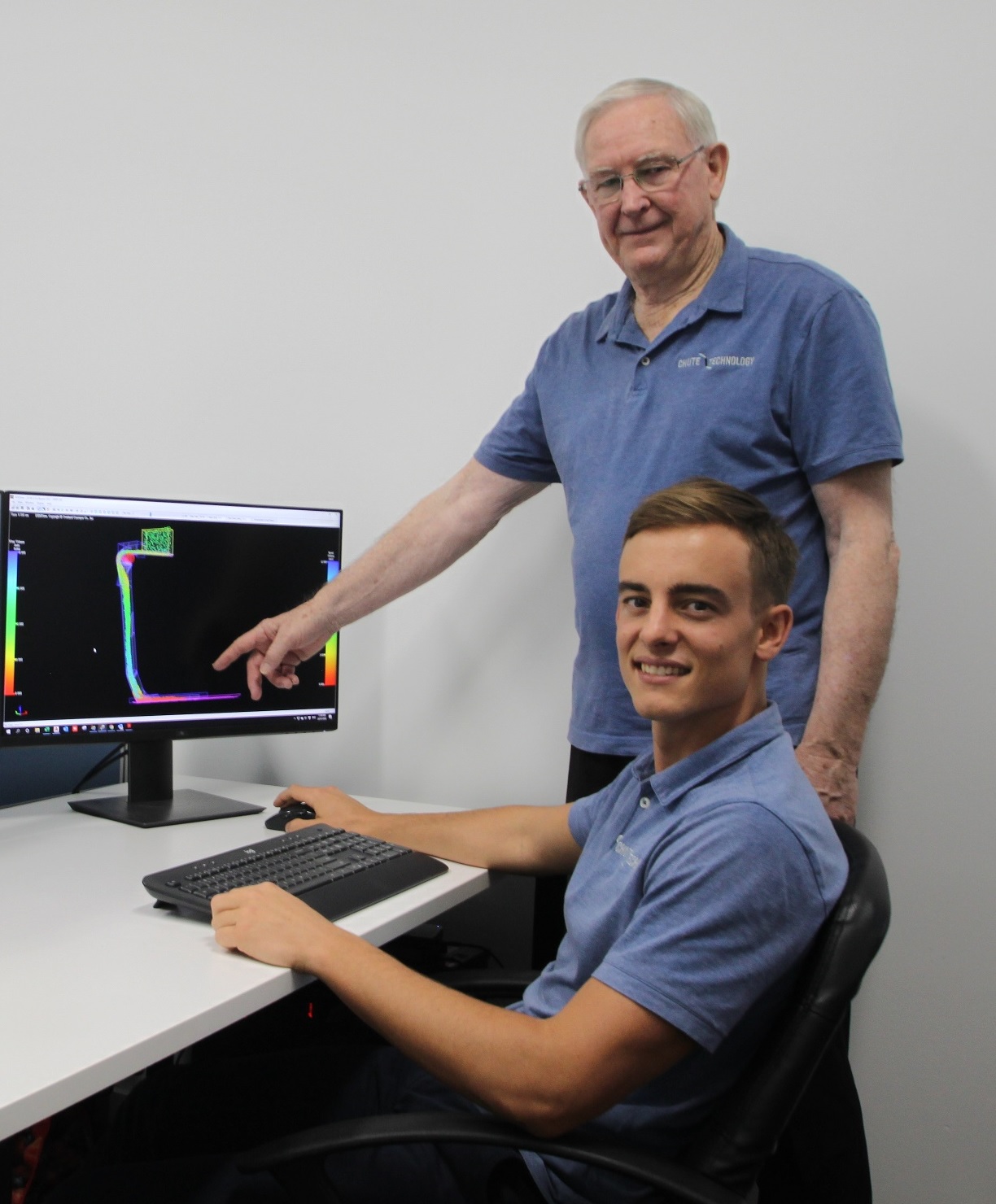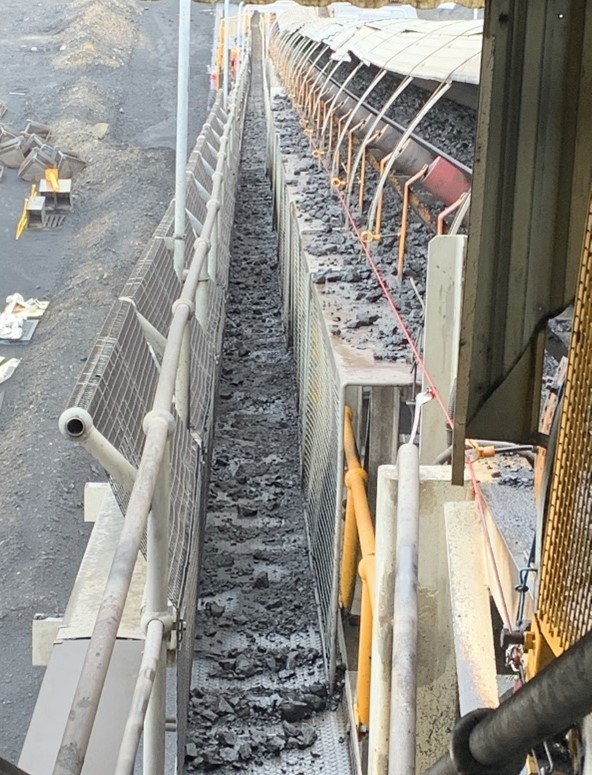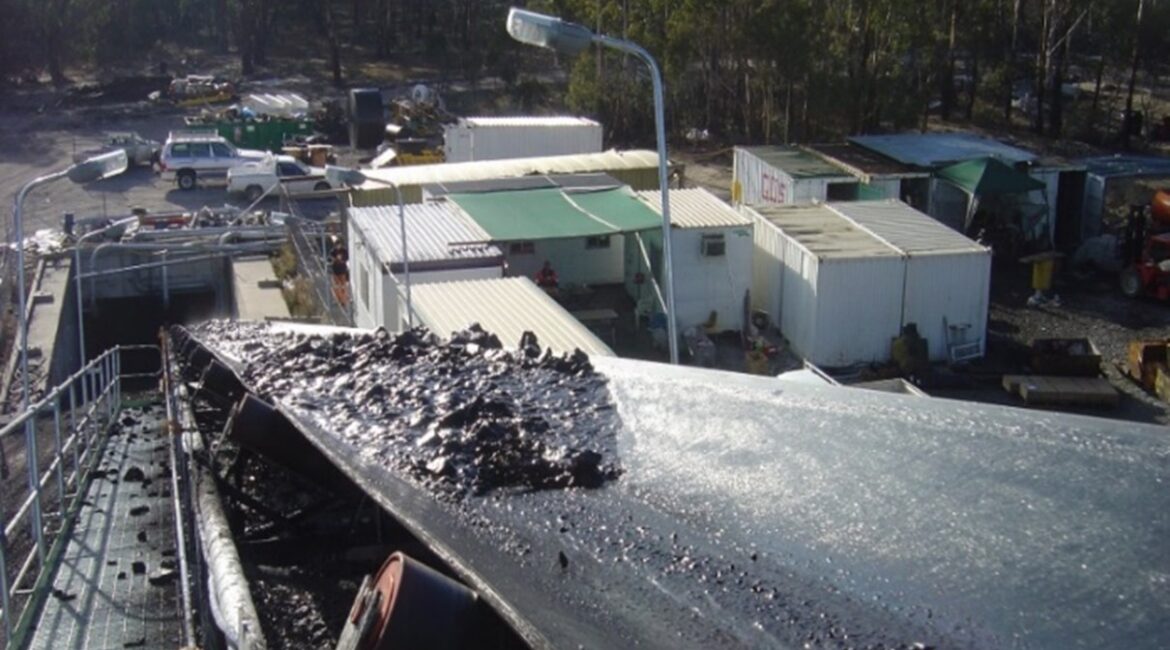Excessive water can cause major issues in materials handling systems.
When water and coal are conveyed, a ‘roll back’ phenomenon can occur depending on the water quantity and the conveyor’s incline angle. In this circumstance, the mixture starts moving against the conveyor’s direction and ultimately flows off the edges of the belt, causing spillage and disruptions.
Operators have been installing dewatering chutes in underground mines for many years, and often the results have been disappointing and inconsistent. Flush backs continue to appear, and the problem persists. Often multiple dewatering chutes are installed in order to rid the system of flush backs, but the problem persists.
The root cause is related to the inability of the dewatering chutes to deal with the dynamics of the coal flow during the belt stop and start sequences, which leads to blockages and wear on the dewatering screens, reducing the effectiveness of water separation and water capture.
Chute Technology studied the behaviour of coal and water flows during all phases of conveyor sequences and developed a design to work effectively over the full range of conditions.
Simulation techniques were applied to understand the dynamics, and to test potential solutions before the manufacturing process started, and the latest design has performed to expectation and eliminated water flush back problems.
Next generation DEM modelling solves complex problems
Chute Technology utilised new ThreeParticle DEM software, which operates in a comprehensive and powerful environment, and has been proven locally and worldwide. It is the only Multiphysics DEM simulation platform for bulk materials with complex shapes and built-in MBD (Multi-Body Dynamics), FEA (Finite Element Analysis) and SPH (Smoothed Particle Hydrodynamics).
Using this software, we simulated the environment, and engineered a solution to separated water from the coal flow to save future downtime, cost, and frustration.
Our high-efficiency automated chute and dewatering screen was retrofitted to an existing chute, where it was synchronised to the conveyor belt dynamics, so it would adapt to varying speeds and throughputs.
The DEM-designed chute assembly includes multiple safety devices to allow bypass modes of the dewatering system (shut off) to conduct maintenance if needed. Additionally, an integrated magnet was installed to remove unwanted metal detritus (tramp metal).
Solution benefits
Benefits of the new solution have included:
- No signs of wear or issues within the equipment after the first seven months of production, involving more than four million tonnes of coal.
- Reduced maintenance downtime and time spent on housekeeping activities, so staff are freed up to work on productive areas elsewhere in the plant
- Highly efficient waste removal via the magnet system.


If throughput isn’t at an expected or desired level, or wear is occurring prematurely, new DEM software, combined with our decades of problem-solving experience, gives miners and bulk handlers the opportunity to find a long-term solution, and one that can be implemented in the shortest possible timeframe.
If you’re having issues with water in materials handling systems, contact Chute Technology today!

